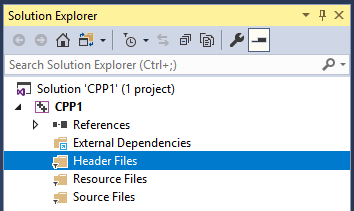Difference between revisions of "Hello World"
(→Helloworld) |
|||
| Line 27: | Line 27: | ||
This statement has three parts: First, std::cout, which identifies the Standard Character output Device (usually, this is the computer screen). Second, the insertion operator (<<), which indicates that what follows is inserted into std::cout. Finally, a sentence within quotes ("Hello world!"), is the content inserted into the standard output. | This statement has three parts: First, std::cout, which identifies the Standard Character output Device (usually, this is the computer screen). Second, the insertion operator (<<), which indicates that what follows is inserted into std::cout. Finally, a sentence within quotes ("Hello world!"), is the content inserted into the standard output. | ||
| + | ===Note - Improvement=== | ||
Note one doesn't have to use the :: (namespace) operator, if need be one can set a using directive for the namespace so everything contained within the namespace is accessible directly from the scope of the file. | Note one doesn't have to use the :: (namespace) operator, if need be one can set a using directive for the namespace so everything contained within the namespace is accessible directly from the scope of the file. | ||
Revision as of 10:48, 13 June 2019
Using Visual Studio
Create a new project in Visual Studio, and choose 'C++' and I would recommend using the 'Empty Project'.
Now in the interface, find 'Solution Explorer':
You will notice a section for 'Header' files and a section for 'Source' files. Right click on the 'Source Files' and choose Add, and then new item. Choose a Source file, and call it 'main.cpp'.
Helloworld
Now type the following into your 'main.cpp' file:
1 #include <iostream>
2
3 int main()
4 {
5 std::cout << "Hello World!" << std::endl;
6 return 0; // Must return an integer (int main)
7 }
Line 1: #include <iostream>
Lines beginning with a hash sign (#) are directives read and interpreted by what is known as the preprocessor. They are special lines interpreted before the compilation of the program itself begins. In this case, the directive #include <iostream>, instructs the preprocessor to include a section of standard C++ code, known as header iostream, that allows to perform standard input and output operations, such as writing the output of this program (Hello World) to the screen.
Line 5: std::cout << "Hello World!" << std::endl;
This statement has three parts: First, std::cout, which identifies the Standard Character output Device (usually, this is the computer screen). Second, the insertion operator (<<), which indicates that what follows is inserted into std::cout. Finally, a sentence within quotes ("Hello world!"), is the content inserted into the standard output.
Note - Improvement
Note one doesn't have to use the :: (namespace) operator, if need be one can set a using directive for the namespace so everything contained within the namespace is accessible directly from the scope of the file.
1 #include <iostream>
2 using namespace std;
3
4 int main()
5 {
6 cout << "Hello World!" << std::endl;
7 return 0; // Must return an integer (int main)
8 }
in this case std::cout is no longer required & one can just use the keyword cout.
